The works Langue vagabonde, Chaque jour qui passe et Ensemble errant were part of the exhibition "Text, texture, textile" at Odradek, Brussels, summer /spring 2022.
Langue Vagabonde
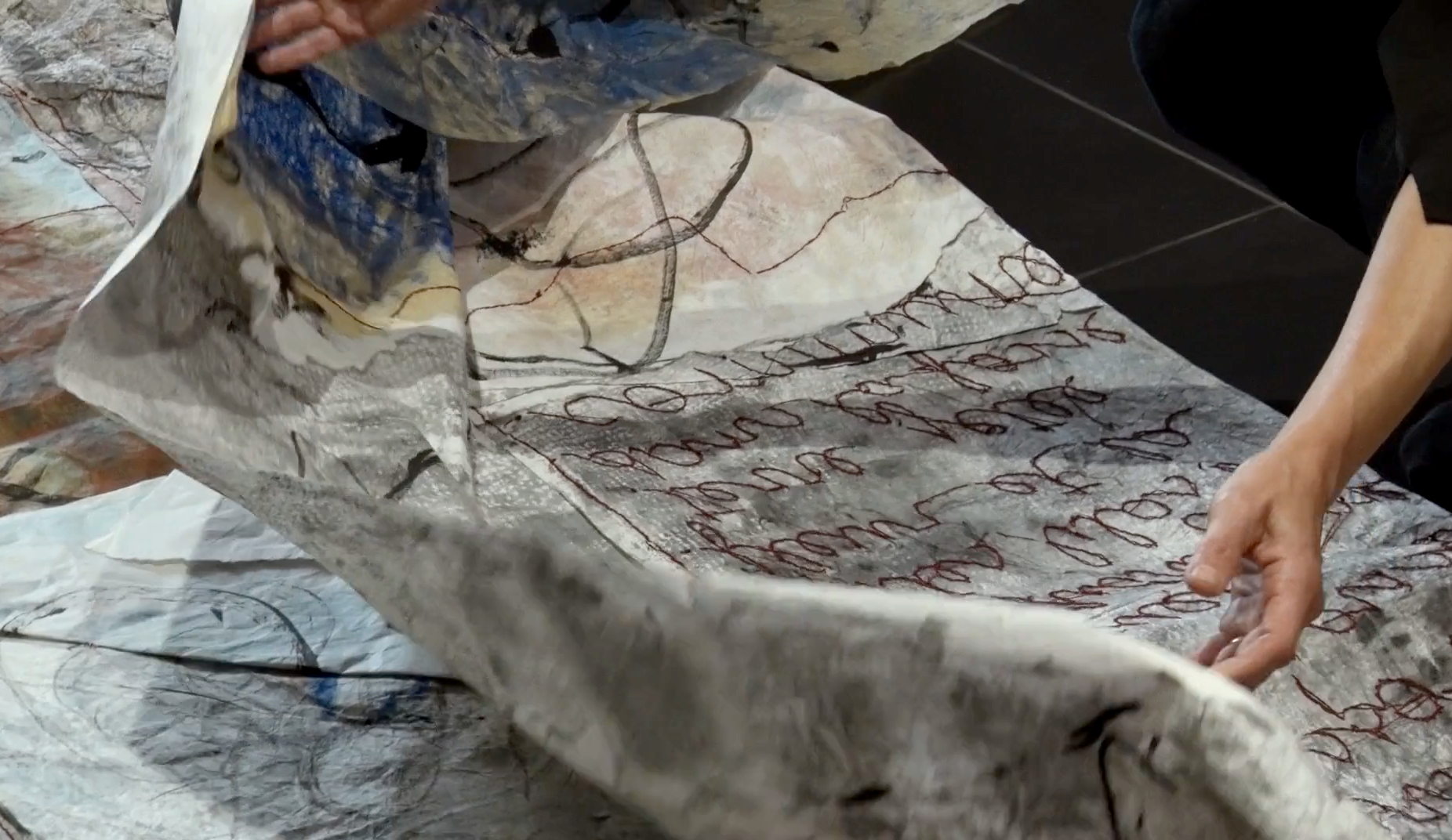
Langue Vagabonde, performances by Marina Gasparini and Natalia Blanch, September 17, 2022. https://vimeo.com/803041016
The encounter between Marina and Natalia’s work is in the idea of displacement. Marina refers to the movement of objects using the phrase “What migrated was portable”. She created lettering by sewing together used fabric clothing whose textures mainly represented flowers. In her performance, Marina packages the letters one by one in the order of the sentence.
In her work, Natalia alludes to the movement of people. She manipulates her work Réparation made of pieces of rice paper torn and sewn by hand, approximately 4 x 3 m. An excerpt from the poem “Separation” by John Berger is embroidered on its surface. This poem addresses the profound transformations that affect the lives of people who emigrate.
Her hand-sewn rice paper works evoke attempts at repair and reconstruction based on her experience.
The gesture of unfolding and folding the large, embroidered work of art and the recitation of the excerpt from the poem constitutes her performance and, according to Simone Schuiten, “implies the care and risk we face every time we defy the constraint of leave our places and our roots.”
Ensemble Errant
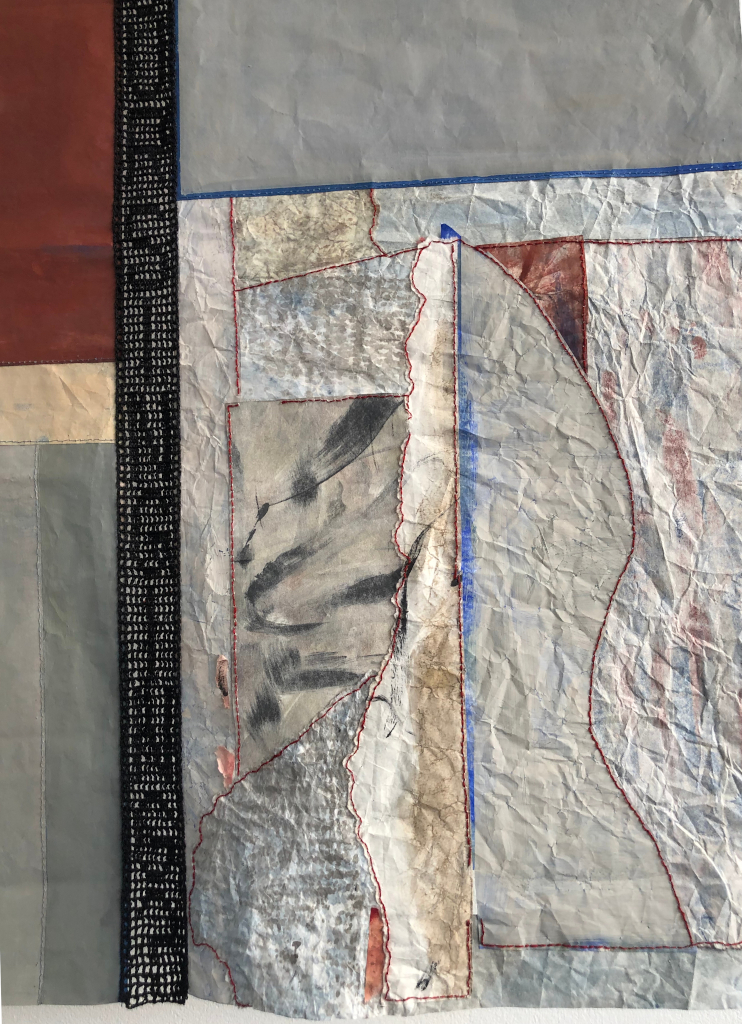
Ensemble errant, oil on hand-sewn paper, crocheted text, 130 x 110 cm, 2022 (detail).
Ensemble Errant was created in response to the phrase “What migrated was portable”, with which Marina Gasparini constructed one of her works.
Ensemble Errant was built while travelling and has a foldable and light character that can be found in other of my works. I work in strips which are here linked together by crocheted words: “[…] into what currency have they changed our singing? […]”, extract from the poem Separation by John Berger, constituting the structure of the work.
This poem talks about emigration -what we bring and what we leave behind when migrating- language and its transmutation.
Chaque jour qui passe
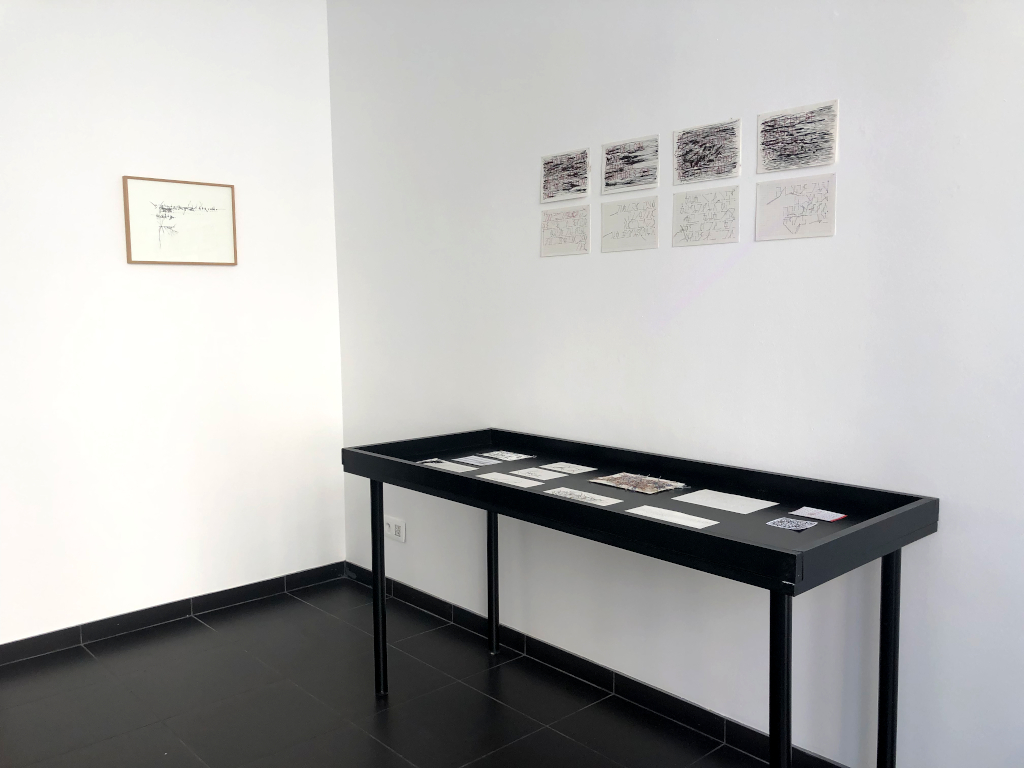
Chaque jour qui passe, series of drawings from Des champs des puits project. Indian ink, pencil and thread on paper, dimensions variable, 2018-2022.
Des champs des puits, book project of drawings and poems, 14.5 x 21 cm, 170 pages. Collaboration with Thierry Bodson. 2018-22.
The series Chaque jour qui passe is part of the book project Des champs des puits in collaboration with Thierry Bodson, where the dialogue between my project Minimal drawings and his poetry have engendered constellations of drawings/poems which alter through successive translations and transformations.
TAMAT, Textile Contemporary Art Center
Tournai, Belgium, 2016.
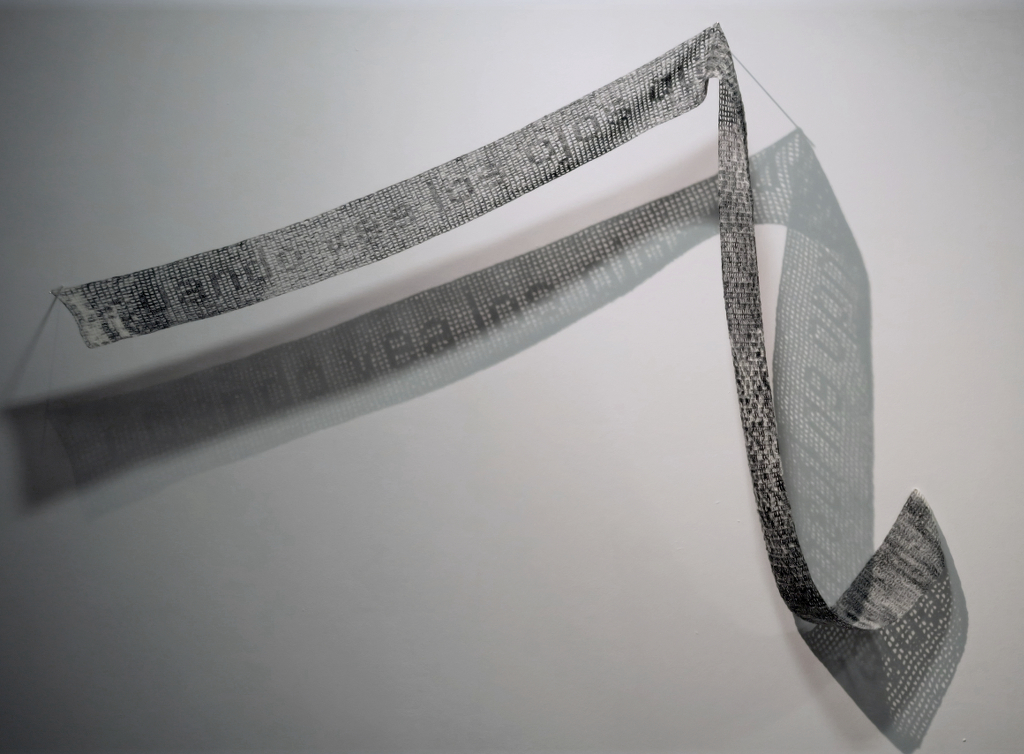
When I see the eyes I have in mine tattooed (Alejandra Pizarnik)
Thread dyed by hand and crocheted, 9 x 173.5 cm, 2016
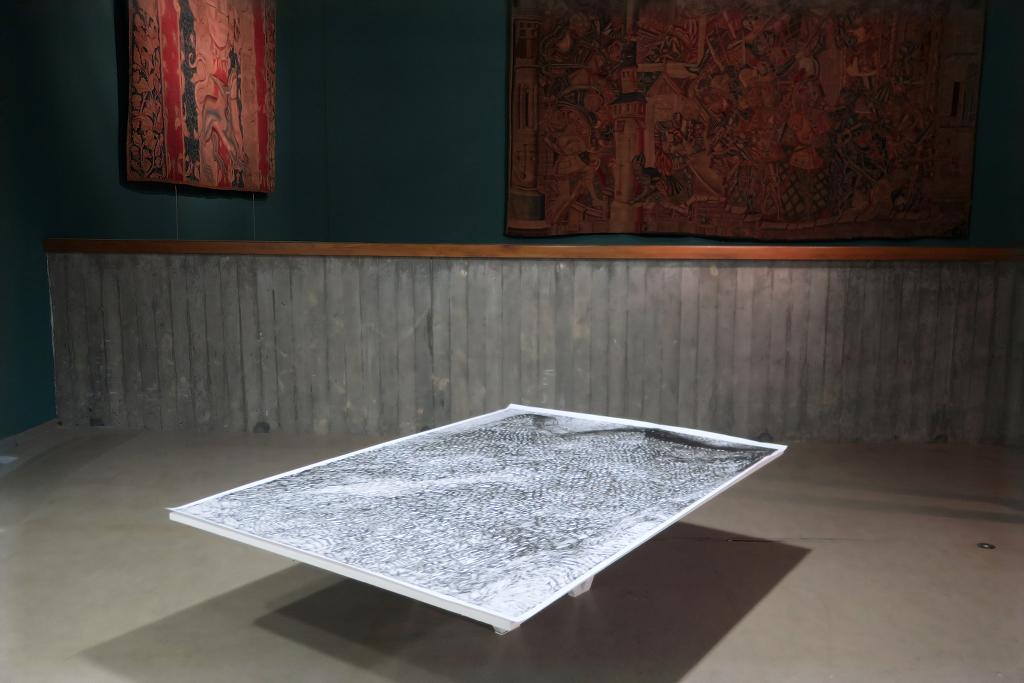
…the place, the wound where we speak our silence… Indian ink on paper, 182 x 129 cm, 2016
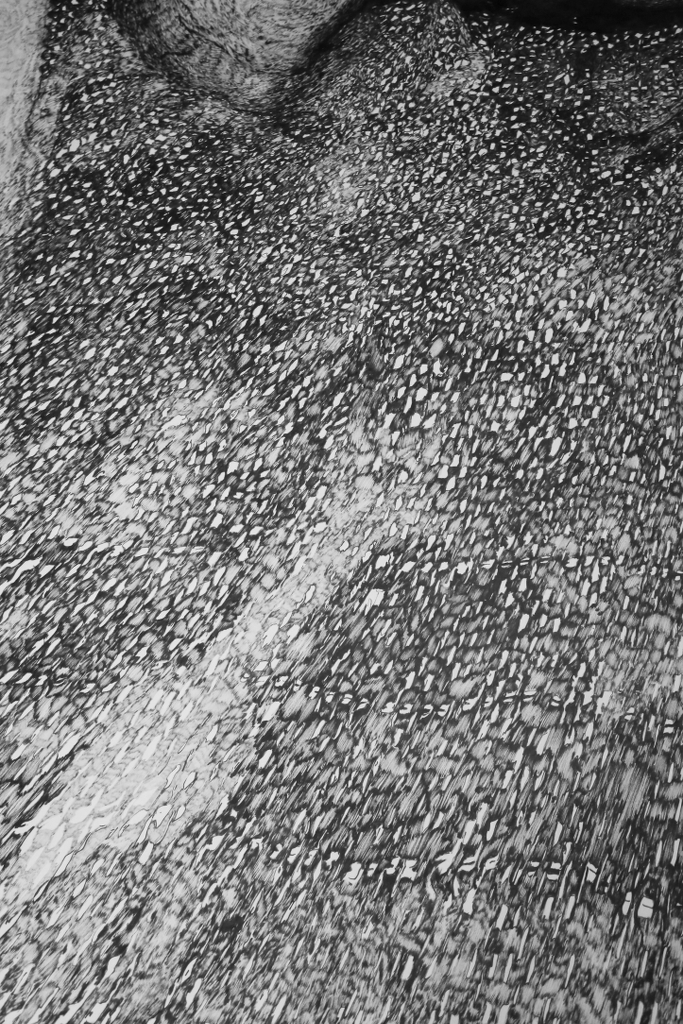
"Explain with words of this world / that departed from me a boat taking me”
Within the framework of her grant in TAMAT, Natalia Blanch concentrated on the crocheted thread. She knots, dyes the thread, then makes up works in which she inserts or embroiders poems, words. In echo to this practice, she reproduces in Indian ink, in very uncluttered drawings, fragments of her crocheted works. Some photographs sometimes get intertwined with the work and the whole dialogues freely.
The crochetwork is slow and patient, between its stitches time stands still. The thread snatches the hours, the days, and imprisons them at the heart of its work. The crochet reveals the empty spaces, the voids, the silences. It is in these voids that her work is born. It is in the absences that it resounds.(...)
PDF text Sybille Cornet in french
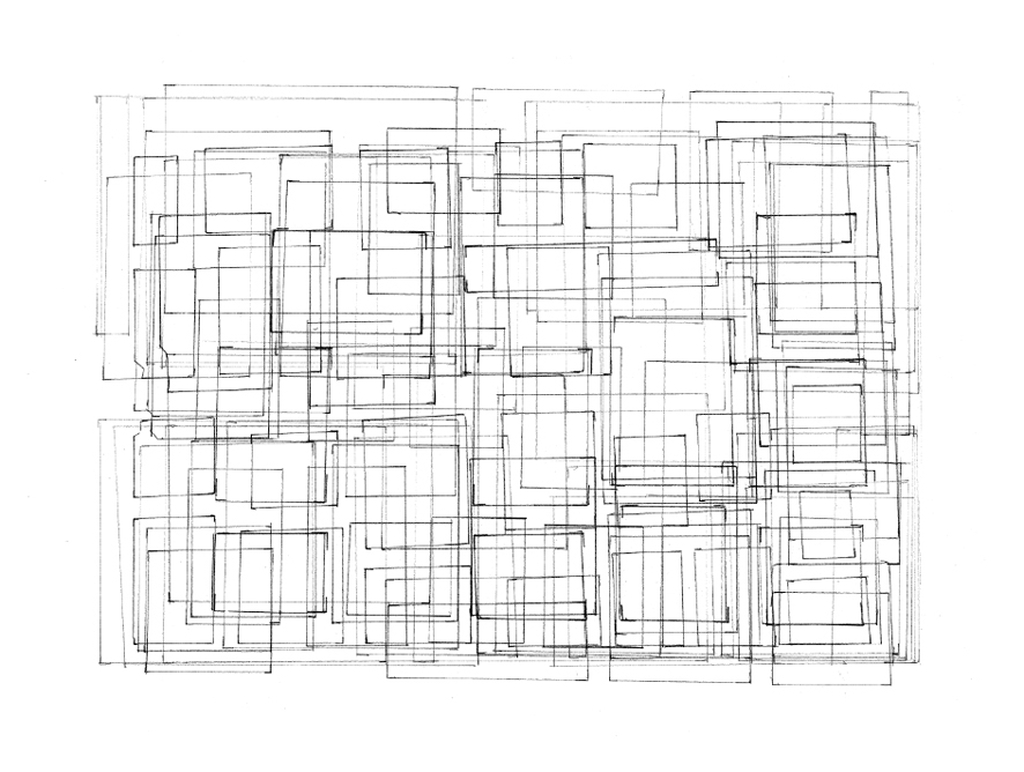
Pencil on paper, 41 x 32 cm, 2014
Intervalos, Museum Caraffa 100 anniversary
Museum Caraffa, Córdoba, Argentine, 2014-15.
Curator: Marta Fuentes.
The exhibition includes works of the collection of the Museum Caraffa as well as the collection of CAC (Contemporary Arts Center) and a piece of art realized ad hoc by Natalia Blanch. This one consists of drawings, a textile work and a sound track created from the artworks “Heliografías” by Leon Ferrari and “Figura” by Eugidio Cerrito of the Museum Caraffa’s collection.